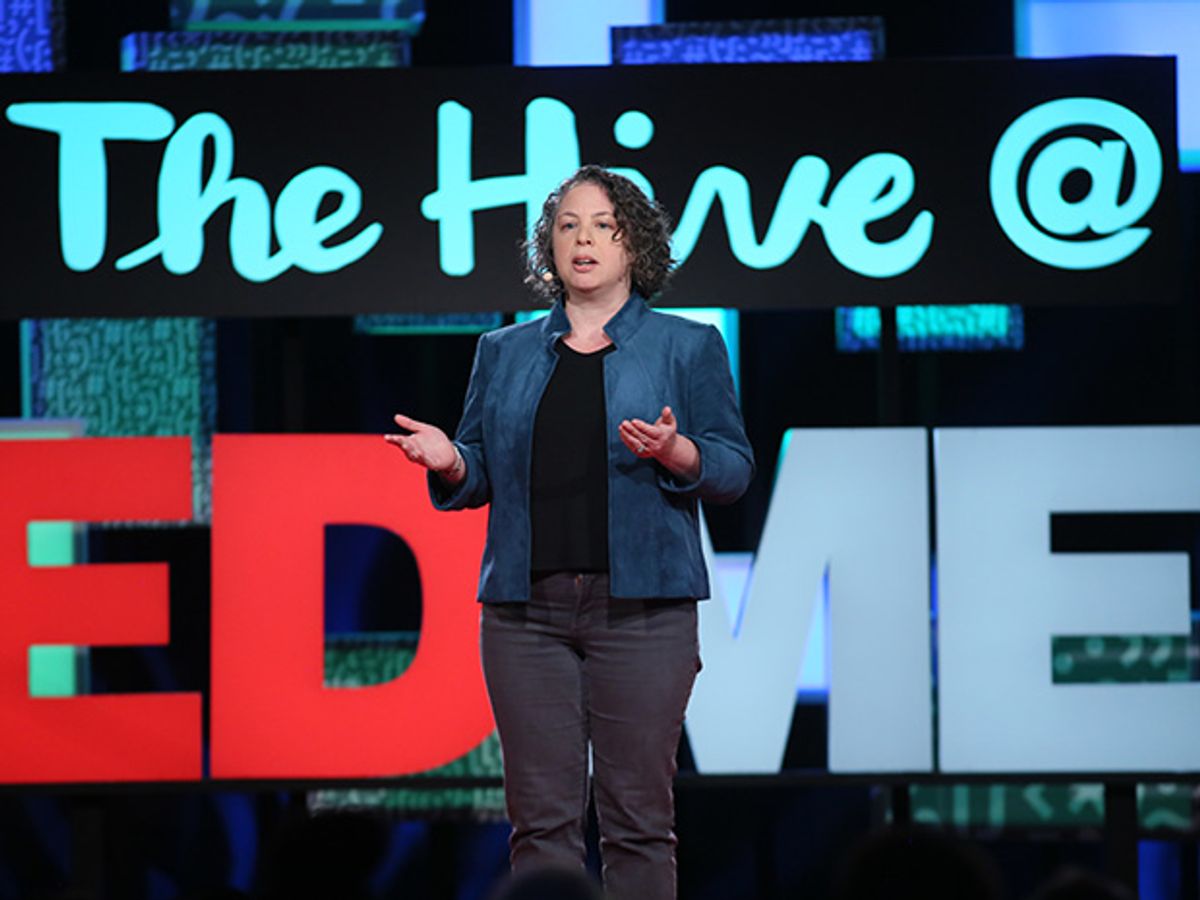Last Wednesday, in a large conference room aptly named “The Hive,” healthcare entrepreneurs from around the country rubbed elbows with venture capitalists, pharma representatives, and strategy consultants attending the TEDMED conference in sunny Palm Springs, California.
In preparation for the annual event, a TEDMED editorial panel spent a year identifing early- to mid-stage organizations to participate in the Hive program, an opportunity to share their ideas with the TEDMED audience.
“So much of healthcare takes a siloed approached,” TEDMED’s chief operating officer, Shirley Bergin, told IEEE Spectrum. “Our objective was to curate high-impact innovators and entrepreneurs across the landscape of health and medicine” and put them in one room together, she says.
On Thursday, each entrepreneur gave a two-minute talk during a morning session titled “Audacious,” plugged with the tagline, “What if visionaries ruled the world?” Each talk addressed the inspiration behind the company and the potential impact their technology could have in healthcare. The talks will be posted online for TEDMED’s massive Web audience in the near future.
IEEE Spectrum was there to meet the innovators, and we winnowed the crowd to four companies poised to make a big impact in healthcare:
Founded in 2014
Location: Philadelphia, Pennsylvania
Company size: 7 employees
BioBots are desktop 3D bioprinters designed for fast, “easy-to-use” biological printing, says co-founder Ricky Solorzano, who built the first prototype in his dorm room after being frustrated at the inaccessibility and high-cost of 3D printing of biological tissues. BioBot 1—a 30-centimeter white and red metal cube—was launched in January 2016 and is currently in use in academic labs around the United States and Canada. In response to customer feedback collected this year, BioBot 2 will include the hardware, wetware (bioinks), and software to easily transform any digital 3D design—say a bone or artery—into code that can be quickly and inexpensively printed, slice-by-slice. “We wanted the biomaterials optimized for the experience, so that at the end of the day, users can easily make something new,” says Solorzano.
Founded in 2014
Location: Palo Alto, Calif.
Company size: 12 employees
This small bioinformatics company has caught our attention before. Founded by two young entrepreneurs with the same name, the company uses a proprietary machine-learning algorithm to mine dozens of biological databases, compare the disparate data, and predict which drugs are most likely to be successful against a particular disease. The system identifies promising drug candidates an estimated 175,000 times faster than traditional wet-lab methods for drug discovery, the company claims. Co-founder Andrew A. Radin told IEEE Spectrum that the medicine matchmaking system has been used to tackle over 75 disease models, and has already produced four promising preclinical candidates now being studied by the company’s pharmaceutical partners.
Founded in 2011
Location: South San Francisco, Calif.
Company size: 28 full-time employees
Profusa’s implantable biosensors first made waves in January at the annual CES conference, and have since been approved for sale in Europe. The company has also received funding from the U.S. National Institutes of Heath and DARPA. These squishy hydrogel sensors, just 500 micrometers in diameter and the length of a piece of long-grain rice, can be safely injected just under the skin, where they incorporate with human tissue without inflammation or rejection. Each sensor can be left for up to two years for monitoring. “Your body doesn’t mind it being there,” says Profusa chairman and CEO Ben Hwang, who showed us the sensor embedded in his own arm. He says that it’s completely unobtrusive. Once in the body, the sensor binds a molecule of choice. Then, by shining a light on the sensor (see image), it is possible to measure the amount of molcules present. The company’s first product detects dissolved oxygen in tissues, a marker of wound healing and health. They are now developing sensors to monitor glucose, lactate, creatinine, and urea, says Hwang.
Founded in 2014
Location: Brooklyn, N.Y.
Company size: 33
Operated out of New York University, in collaboration with Human Project Inc., this longitudinal study will follow 10,000 New Yorkers among 4,000 families over 20 years. The aim: to “quantify the human condition,” says the project’s chief scientist, Hannah Bayer. The Kavli Foundation funded the initial three-year development cycle for the project, which intends to collect massive amounts of biological, behavioral, and environmental data using smartphone technology, location trackers, health records, and more. All that data will be stored in a firewall-protected, continually re-encrypted database that is physically locked in a “Mission: Impossible room,” says Bayer. “We owe the participants the absolute best when it comes to security and privacy concerns.” A pilot trial with 30 to 40 families will begin in January, with the full study scheduled to kick off in September 2017.
Megan is an award-winning freelance journalist based in Boston, Massachusetts, specializing in the life sciences and biotechnology. She was previously a health columnist for the Boston Globe and has contributed to Newsweek, Scientific American, and Nature, among others. She is the co-author of a college biology textbook, “Biology Now,” published by W.W. Norton. Megan received an M.S. from the Graduate Program in Science Writing at the Massachusetts Institute of Technology, a B.A. at Boston College, and worked as an educator at the Museum of Science, Boston.





